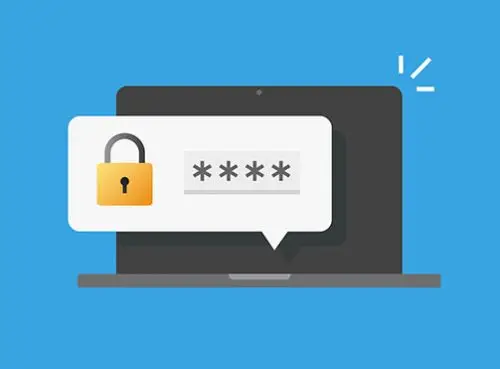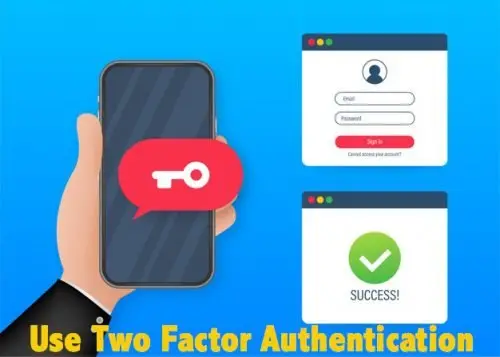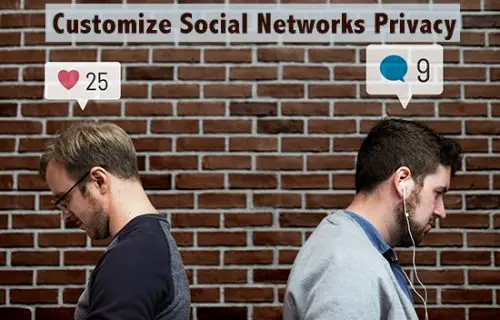Top Guidelines Of Computer safety tip
Computer Safety from Physical Stolen

While this may sound obvious, many of us believe that when we live in a safe city, things like computer theft don’t happen, until they do. If a burglar has trouble breaking into your property, you can move on to more precise handling of open doors. Stolen computers can also be the result of an altercation involving a relative, friend, or roommate, so closing the door to the room where you buy the computer when not in use can prevent the sudden loss of an acquaintance from confidence.
A physical lock can be a major deterrent for your thief, who either really wants to grab your laptop and run away, or doesn’t need to make an effort to pick the lock. Cable locks usually consist of a steel cable with a loop that connects to an anchor (something difficult to move, such as a desk, wall, or ground) and then a loop on the computer. It works like a motorcycle lock to secure your PC to something stable. Some products have an adhesive anchor, which may not be as powerful as a built-in anchor point, but should still keep a thief from intruding.
The cabinet lock is another option that can be found in many sizes and can protect anything from a small tower of a computer system to a complete program containing a tower, control keyboard, mouse, and printer. You should use a case with each cable and lock plate in case someone else takes their point trying to open it later.
Computer Safety Using Password

Usually, use a password
Almost never let your computer system take passwords into account or only give you one. Enter your password every time you log in to your laptop or computer, so if someone picks up your laptop, they won’t have unlocked access. Don’t write down your passwords, keep them near your computer, and don’t leave your password blank; It’s like leaving your house key hanging from a doorknob. You can also enable a password on your own screen saver for double security.
Create a strong password

Make sure it’s difficult for any thief to know your password if it’s clever.
Identify something that you can very easily remember that does not contain prominent words, phrases, or dates, such as names of spouses and children, names of pets, birthdays, or addresses.
Make sure there can be at least 8 people or more and that you work with a combination of upper and lower case letters, numbers and unique numbers (for example! @ # $%).

Interaction with fingerprint lock
As per computer safety, the fingerprint lock plugs into the USB port of your laptop or computer, and you put your finger on it to access it as well. You can authorize multiple fingerprints (useful for your family’s personal computers) and set up some fingerprint locks to also provide passwords for your various online accounts.
Laptop monitoring
Many laptops can mail the sign over Wi-Fi so you can track when it is missing. You can also buy a program or applications that warn the authorities that your personal computer has been stolen for a long time. This may not work similarly with a desktop computer that stops sending Wi-Fi alerts when disconnected.
Encrypt your confidential documents
The Major thing under computer safety which called data protection. Encryption encrypts the content of the information so that only a person with the correct critical encryption can decrypt it. If someone manages to jailbreak your laptop and the documents are not encrypted, they can certainly be examined. Some USB drives encrypt files immediately for the duration of the backup, and there are various encryption products and services as well as computer software.

Computer Safety Frim RANSOMWARE
Hackers and cyber-attacks are a constant source of concern in terms of trying to keep the information stored on your personal computer safe. You understand how to protect yourself from viruses and ransomware and how to follow web security guidelines, but what about protecting your computer yourself? With compact computers and packages stored in the cloud, a stolen machine or data is easy to take over, so be sure to take the following precautions.
Keep your software up to date
Antivirus software was created to prevent viruses and malware from entering the computer procedure and to detect and remove them from devices that have already been infected. Always update any software, especially antivirus software. Ransomware and viruses are constantly changing the way your information is infiltrated and attacked, so software updates are often released to protect against the latest threats.
Patches, updates, and even enhancements are created to restore programs and protect them from new vulnerabilities, so be sure to install the latest version to better protect your data. Antivirus software is usually provided with the purchase of a personal computer, and there are many trusted brands out there.
Installing software updates for your workflow and plans is critical. As a general rule of thumb, install the latest stability updates on your hardware:
Enable automatic updates in your operating program.
Use website browsers, including Chrome or Firefox, that receive regular computerized security updates.
Make sure to keep your browser plug-ins (Flash, Java, etc.) up to date.

Be careful when clicking
Avoid visiting mysterious Internet sites and downloading software from unreliable sources. These websites often host malware that installs immediately (usually invisibly) and puts your computer at risk. If attachments or hyperlinks in an email look unexpected or suspicious for just about any explanation, don’t click on them.
Simply because you may click, doesn’t necessarily mean it is best to. Keep in mind; it may possibly cost you a hefty sum. Malicious backlinks can perform destruction in a number of alternative ways, so you’ll want to inspect links and make sure they’re from trustworthy senders ahead of clicking.
Protect secure information
Focus on the protected Knowledge you are dealing with and the limitations associated with it. Critique the generally accepted classification of UCB information to understand the specifications of the data security stage. As usual:
Keep high-level protected information (such as SSN, credit card information, student records, general information and health data, etc.) away from your workstation, laptop, or cellular equipment.
Safely remove sensitive information from your program when it is not needed.
Generally, use encryption when storing or transmitting confidential data.

Use Two-Factor Authentication
It is very important to have a strong password; however, it is much more important to obtain two-way or multi-aspect authentication. This method provides two levels of security action. Therefore, if a hacker can accurately guess your password, an additional security tweak remains to ensure that your account has not been compromised.
Make a backup of your data
Storage hasn’t been of much value recently. There is no excuse for not having a reserve of important knowledge. Back up to a physical site and in the cloud. Try to remember that malicious threats and hackers generally don’t need to steal your information, but from time to time, the end goal is always to encrypt or erase it. Let’s get back to it for a top recovery tool.
Remember, your personality is essential
In some cases, Little Ones become vulnerable to identity theft by revealing their identity online because they think they have nothing to lose. The personality of a teenager can be as valuable, if not more, than that of an adult. Scammers can trick young people into revealing their social security options and various facts that can be used to steal their identity. Remind children never to reveal too much detail on their own. Your start day, address, and SSN are examples of personal facts, so they should not be shared freely.
Avoid clicking on incoming links in emails.
Almost everyone will receive occasional emails from their financial institution, tax establishment, or similar accounts and solutions. But to be risk-free in general, you should normally open a browser window and type the URL in the address bar, rather than clicking hyperlinks in an email. Why? Phishing emails are among the most common techniques for hackers to obtain individual data and information, tricking people into inadvertently giving their login credentials to lenders, credit cards, and other accounts. Accounts where they can get additional details, make unauthorized purchases, and also steal your ID. “Don’t get caught by phishers. Phishing occurs after you receive an email or perhaps social media marketing information that appears to come from a trusted place, such as a lender or a social media website. When you do Clicking on a website link during concept takes you to a website that appears legitimate, but maybe run by criminals who want to trick you into signing up with your username and password in order to access them.

Use more than one email deal for different contexts.
Just like using the same password for multiple accounts, using the same email handle. There is often a recipe for catastrophe for every account. That’s not to say you couldn’t use the exact same email with greater than after, but a good strategy is to work with a different email address for different contexts, including one specifically for personal accounts, just one for business accounts, only one for net retail accounts and the like. One of my favorites is using unique email accounts for different contexts. Many safety professionals know this, but it is not a thing. We tried our less technical friends. Due to the relief of webmail and the support of most mail programs for different e-mail accounts, this is not that heavy. To keep things very simple, I normally suggest four-five different email accounts: you have a perpetual deal with, your business address, a tackle to buy on the internet if you don’t believe the store, an address for trusted merchants, and a deal with for email subscriptions. For more ideas on the types of accounts, you can use them with each email account.
Use Encrypted Cloud Assistance.
While cloud storage can be a really perfect backup solution, you are also more at risk for hackers if you are not on the lookout for the cloud solutions you ultimately choose. Victoria Ivey, in a short article on CIO.com, involves encrypting the information your retailer places in the cloud or using a cloud provider that encrypts your information for you. “Usually there are some cloud products and services that offer local encryption and decryption of someone’s information, in addition to storage and backup. It implies that the support will be handled by encrypting your data files in the same way on your own computer system and properly storing them in the cloud. So there is an even greater chance that no one, including service providers or server administrators, will be able to use your data files this time.
Avoid sensitive transactions on public Wi-Fi networks.
Working at a local coffee shop can be attractive, but using a public Wi-Fi connection means that outsiders can intercept your data. Avoid banking and sending other sensitive information over a public Wi-Fi network. As the FTC notes, “If you are using an unsecured network to log into an unencrypted site or a site that uses encryption only on the login page, other net users can see what you see and what you send. They can hijack your session and log in like you. “
Check your privacy settings regularly.
Privacy options generally change on social media platforms, so remember to check your personal options frequently and make any changes you see fit. “Written content uploaded to social media marketing platforms is generally not secure, so it is very important to understand how to use the privacy features that your social media websites can provide,” according to Social Network Examiner. Click on the result to see complete information on how to update the privacy settings on each of the popular social networks.

Customize the privacy settings of your social networks.
Social networking sites like Facebook allow customers to customize their privacy settings. On Facebook, for example, you can choose who is willing to view the content you write and who is willing to see perspective information on your profile, such as your home from work, start day, and city of origin. Choose the highest possible confidentiality consistently to ensure that your own information does not fall into the hands of someone with malicious intent.
“The written content you post online will be around for some time, but you can adjust your privacy settings on most social media websites. This usually affects who can contact you and who can see the information you enter. Be picky. Sharing is fun, but keeps your web search history in mind. And when you disclose information and facts publicly, attackers can use them to intercept your identity, “says the Data Protection Chronicle.
Avoid faxing sensitive items unless it is critical.
Faxing is usually a simple solution to send information quickly, however, it is impossible to guarantee that the intended recipient will be the one who will receive the document with a different conclusion, or that the information will not be visible to someone else during the entire process. The process of transferring to another office or to another person. It is important that there are sufficient security measures in place to ensure that only the intended recipient purchases it.

Distribute your passwords carefully.
This may be information security advice, which has been pointed out by many protectionists, but there are still many people who do not follow this recommendation. The reality is that it is not practical in the fashionable natural environment. Family members should share passwords for accounts of financial institutions, credit cards and other internet providers with spouses and share a lot of individual connection data to services like Netflix. At work, there are many main reasons why colleagues need to share their credentials. You don’t have to give passwords without worrying; alternatively, check when another person is legitimately asked to enter their own information or account and provide accessibility on a case-by-case basis. If another human being wants accessibility for an isolated reason, change your password once the effort is over and stop asking. Another option implements a password manager that could share login credentials with others without them being able to view or interpret login information.
Turn off Bluetooth after not working with it.
Bluetooth technology has provided great facilities for your cellular environment, but it also opens the door to vulnerabilities. Most of the threats that exploit Bluetooth connectivity rely on the Lively Bluetooth connection, and when they are not typically devastating or dangerous, they are certainly uncomfortable and can be serious. “Bluetooth attacks depend on the exploitation of the permission request / grant permission, which is the backbone of Bluetooth connectivity. Regardless of the security measures with your unit, the only solution to absolutely prevent attackers from exploiting the system authorization / grant will be to turn off the Bluetooth function of your device after you do not use it, do not turn it on. an invisible or undetectable system. in a complete way, but completely stopping it (you will find bad apps that could turn the system on again, just a cause The total protection of the application is significant) “

